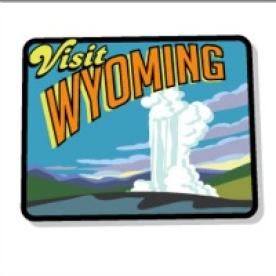On June 21, 2016, the U.S. District Court for the District of Wyoming struck down the U.S. Bureau of Land Management’s (BLM’s) hydraulic fracturing regulations, finding that BLM “lacked Congressional authority to promulgate the regulations.” This decision is a win for industry and states’ rights, setting aside a federal rule that is unnecessarily duplicative, burdensome and beyond the scope of BLM’s statutory authority.
This is yet another setback for the Obama Administration’s second term regulatory push, as previous industry challenges have resulted in the stay of other major new regulatory programs, including EPA’s Clean Power Plan and the Clean Water Act jurisdictional rule. The district court’s decision is just one of several recent examples where federal courts have rejected the Administration’s attempts to assert itself (through regulatory action or enforcement action) on the basis of authority inferred from silence in federal enabling statutes.
Recently, the U.S. District Court for the Eastern District of Louisiana dismissed a criminal enforcement action brought by the Bureau of Safety and Environmental Enforcement (BSEE) against offshore contractors involved in the Black Elk explosion, finding that BSEE lacked authority under the Outer Continental Shelf Lands Act (OCSLA) to impose criminal penalties against independent contractors on the Outer Continental Shelf.
Regulatory Background
The decision from the federal district court in Wyoming is the latest stumbling block for BLM in its effort to put in place federal regulations applicable to oil and gas activities performed on federal and Indian lands. BLM first proposed the hydraulic fracturing rule in May 2012. After receiving over 170,000 public comments, BLM re-proposed the rule in May 2013 citing a need for “further improvements and clarifications.” On March 20, 2015, BLM finalized the new hydraulic fracturing regulations, with an effective date of June 24, 2015.
The day the BLM rule was released, several industry groups filed a petition for review of the BLM’s final agency action in the federal District Court in Wyoming. Shortly thereafter, Wyoming, Colorado, North Dakota and Utah joined the lawsuit in opposition of the BLM rule. On June 23, 2015, just one day before the rule was to take effect, U.S. District Judge Scott W. Skavdahl postponed the effective date of the rule as he considered a preliminary junction motion.
On September 30, 2015, Judge Skavdahl granted the motion for preliminary injunction, barring BLM from enforcing the rules. In a signal to his eventual final decision, Judge Skavdahl concluded that industry and states were likely to succeed in their challenge because the court doubted that Congress had granted or delegated BLM the authority to regulate hydraulic fracturing.
Federal Court Strikes Down the BLM Rule
As Judge Skavdahl noted in his decision, “[a] precondition to deference under Chevron is a congressional delegation of administrative authority." Therefore, Judge Skavdahl first considered whether BLM acted within the scope of its congressionally-delegated authority in promulgating the BLM hydraulic fracturing rule.
BLM cited its “broad authority” to regulate oil and gas operations and hydraulic fracturing under several statutes, including the Federal Land Policy and Management Act of 1976 (FLPMA); the Mineral Leasing Act of 1920 (MLA); the Indian Mineral Leasing Act of 1938 (IMLA),; and the Indian Mineral Development Act of 1982 (IMDA). The court disagreed, noting that “nothing in FLPMA provides BLM with specific authority to regulate hydraulic fracturing or underground injections of any kind; rather, FLPMA primarily establishes congressional policy that the Secretary manage the public lands under principles of multiple use and sustained yield. At its core, FLPMA is a land use planning statute.”
With respect to the MLA, Judge Skavdahl found that there was no broad authority to regulate protection of the environment contained in the statute and that the MLA “requires only that certain, specific lease provisions appear in all federal oil and gas leases for the safety and welfare of miners and prevention of undue waste, and to insure the sale of mined minerals to the United States and the public at reasonable prices.” The court was also unable to find any relevant authority in the IMLA or IMDA.
Judge Skavdahl next considered the impact of the hydraulic fracturing-specific legislation contained in the Safe Drinking Water Act (SDWA) and the Energy Policy Act of 2005 on BLM’s potential authority under the FLPMA or MLA. In doing so, Judge Skavdahl discussed that it was the U.S. Environmental Protection Agency (EPA), not BLM, in which Congress vested the regulatory authority “for environmental protection of underground water sources.”
Judge Skavdahl cited the SDWA as the statute establishing a regulatory program “specifically for the protection of underground sources of drinking water.” Judge Skavdahl revisited the long, complicated history of the SDWA and hydraulic fracturing.
Since 1974, the SDWA has prohibited “any underground injection” without a permit and has required EPA to oversee the state’s development of underground injection control (UIC) programs. The EPA took the position for the first twenty years of the SDWA that the hydraulic fracturing process was not subject to the UIC program because the process was not “underground injection.” In 1997 amidst a legal challenge of Alabama’s UIC program, the Eleventh Circuit rejected EPA’s position on the SDWA’s applicability to hydraulic fracturing, concluding that “the unambiguous language of the [SDWA] made clear that Congress intended for the EPA to regulate all underground injection under the UIC programs, and the process of hydraulic fracturing obviously fell within the plain meaning of the statutory definition of ‘underground injection.’”
When Congress enacted the Energy Policy Act of 2005, it included an amendment specifically excluding “hydraulic fracturing (other than with diesel fuels)” from the definition of “underground injection.” Judge Skavdahl concluded that the removal of EPA’s regulatory authority over hydraulic fracturing in the 2005 Energy Policy Act also precluded BLM from regulating the process. Judge Skavdahl noted that “it makes no sense to interpret the more general authority granted by the MLA and FLPMA as providing the BLM authority to regulate fracking when Congress has directly spoken to the ‘topic at hand’ in the 2005 Energy Policy Act.”
BLM argued that there was no language in the SDWA or Energy Policy Act of 2005 that expressly prohibited BLM from regulating underground injection under the FLPMA or MLA. Judge Skavdahl disagreed, noting that “a court does not presume a delegation of power simply from the absence of an express withholding of power.” citing Chamber of Commerce of U.S. v. NLRB, 721 F.3d 152, 160 (4th Cir. 2013). Judge Skavdahl characterized BLM’s position as making an “end-run around the 2005 Energy Policy Act,” discussing further that:
“Congress has not directed the BLM to enact regulations governing hydraulic fracturing. Indeed, Congress has expressly removed federal agency authority to regulate the activity, making its intent clear. If this Court were to accept Respondents' and Intervenor- Respondents' argument, there would be no limit to the scope or extent of Congressionally delegated authority BLM has, regardless of topic or subject matter.”
On June 24, 2016, BLM appealed Judge Skavdahl’s decision to the U.S. Court of Appeals for the Tenth Circuit, signaling a long battle ahead. Even if the Tenth Circuit were to reverse Judge Skavdahl’s decision, legal challenges still remain for BLM as the district court has yet to consider the industry and state petitioner challenges under the Administrative Procedure Act.





 i
i

